The End Of A Busy Year
What A Year . . .
We started 2017 trying to decide the best way to grow our new farm business. Now as we head into 2018 we’re looking back at what we accomplished, and more importantly, looking forward to new growth next year.
During the course of the last year, we were able to significantly increase the amount and variety of medicinal herbs we're planting, as well as diversify into other sustainable products for our farm. We finished our nursery and transplanted a variety of medicinal herbs into the beds. We started growing shiitake and red wine cap mushrooms. We planted nearly 100,000 ginseng seeds. And we added several varieties of garlic, so we now have a total of 6 varieties to choose from.
I like before-and-after photos. I think they're a great way to tell a story because you can see each step of the process, and you get a sense of watching something in-progress. Sadly, I usually forget to take those photos until it's too late and the project is pretty much finished. This year was different, though. We made a real effort to document our progress as we went along, so we could share with you all. So here it is - below is a series of galleries that highlight some of this year's projects.
Nursery
Our first big project was our plant nursery. Like so many things on our farm, the nursery looks a little different than a traditional nursery, but it still serves the same purpose. It gives us a protected spot where we can grow plants until they are mature enough to sell or plant out into permanent beds. We located our nursery just inside the edge of the woods so it takes advantage of natural forest soil and shade. But it's close enough to the house that plants won't be neglected, and water is nearby if needed. This fall we transplanted several hundred roots into the nursery beds, including Black Cohosh, Red Trillium, Blue Cohosh, Bloodroot and Goldenseal. Next year we plan to add Ginseng, False Unicorn, Pinkroot and Jack-In-The-Pulpit. In most cases, once plants mature, we will dig them and divide them to produce planting stock that we can plant out or sell.
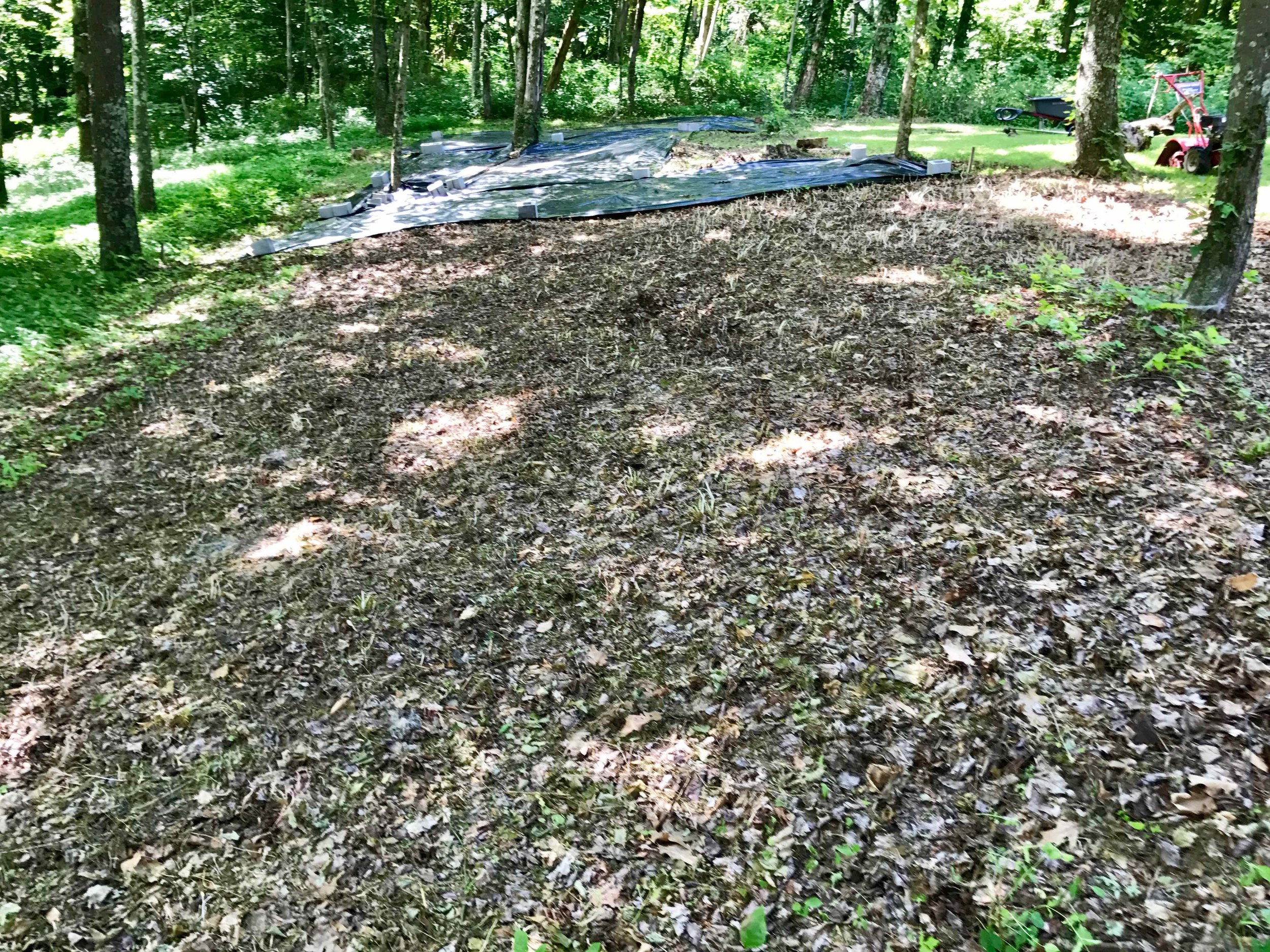
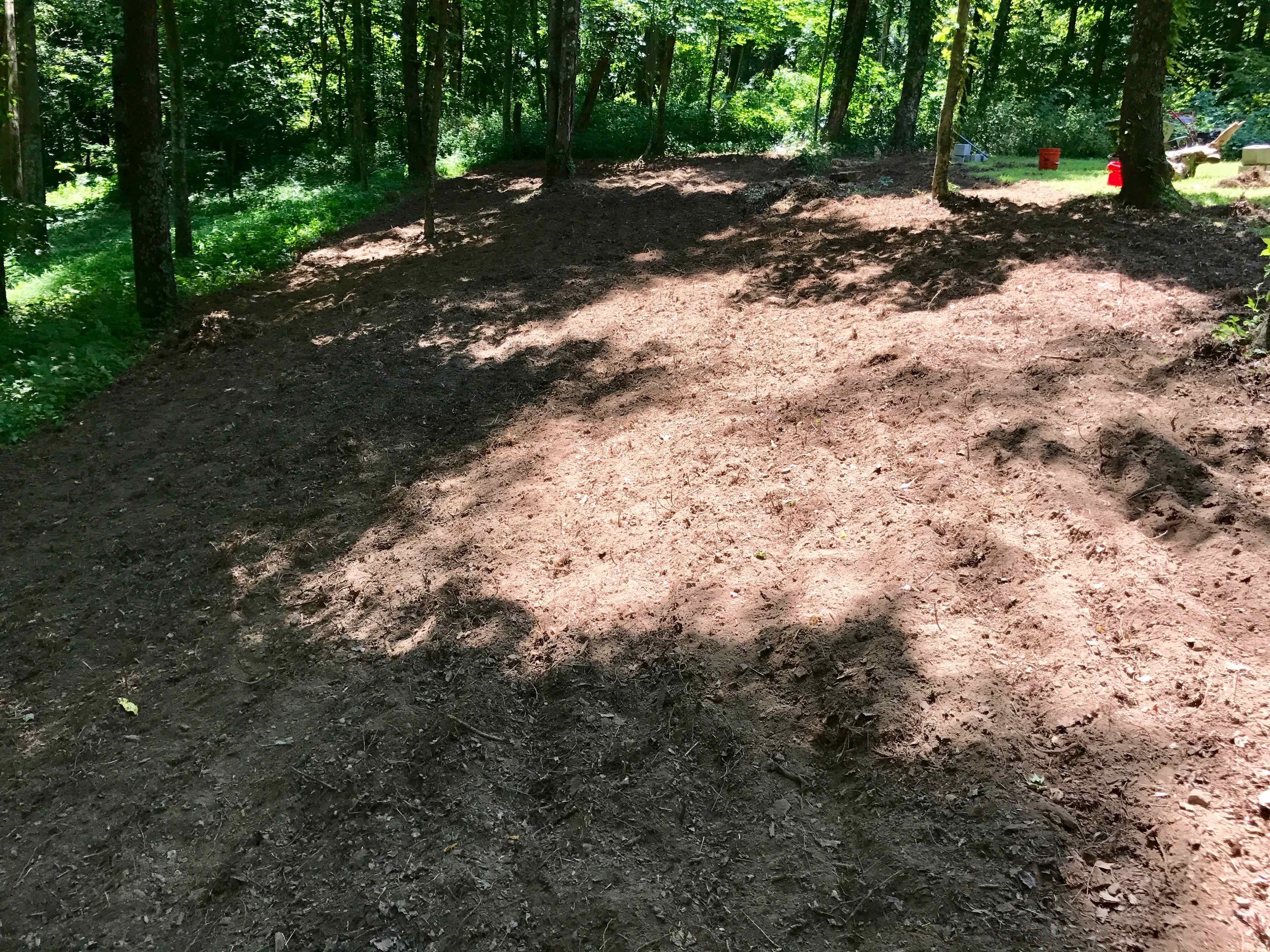
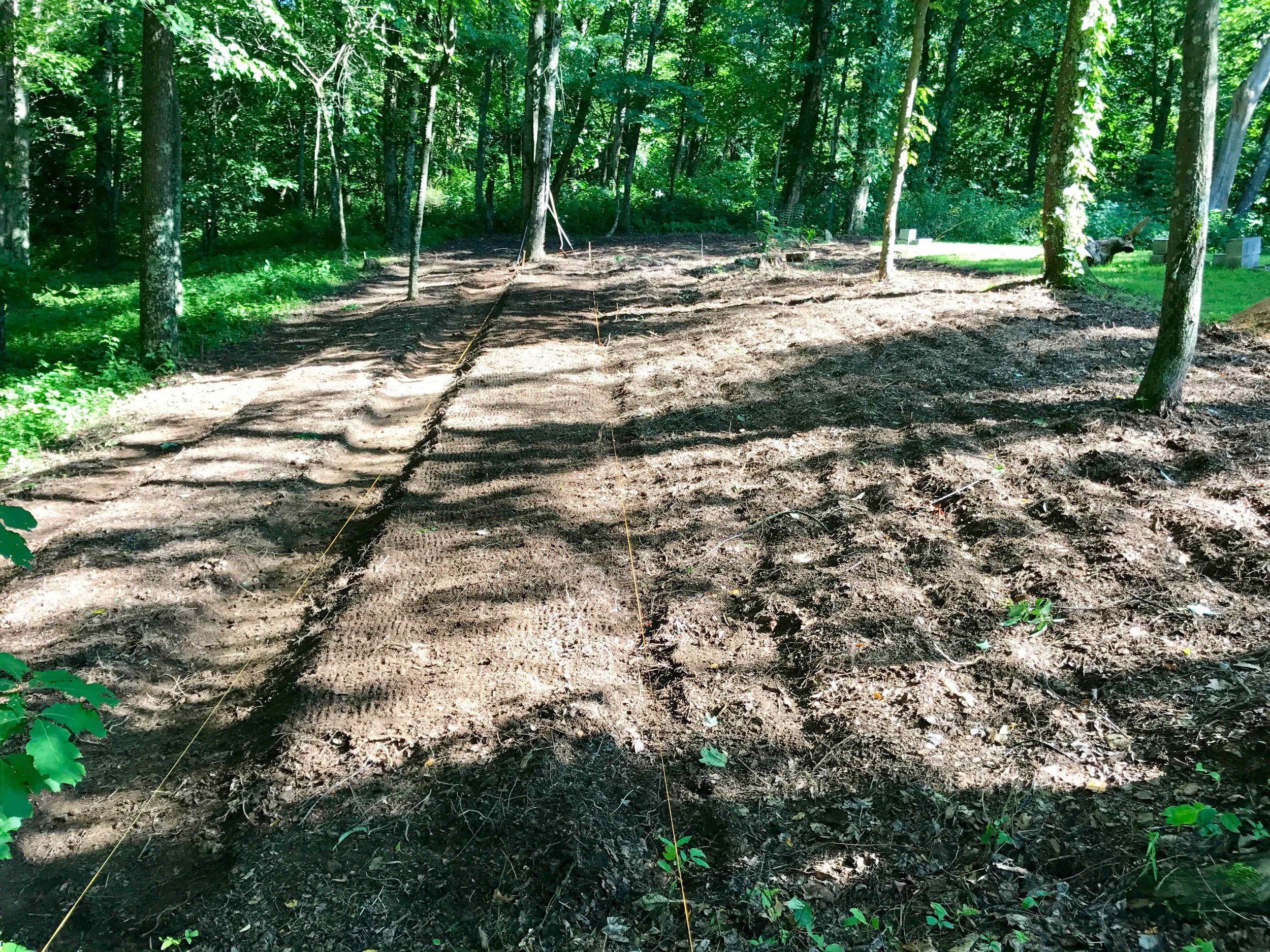
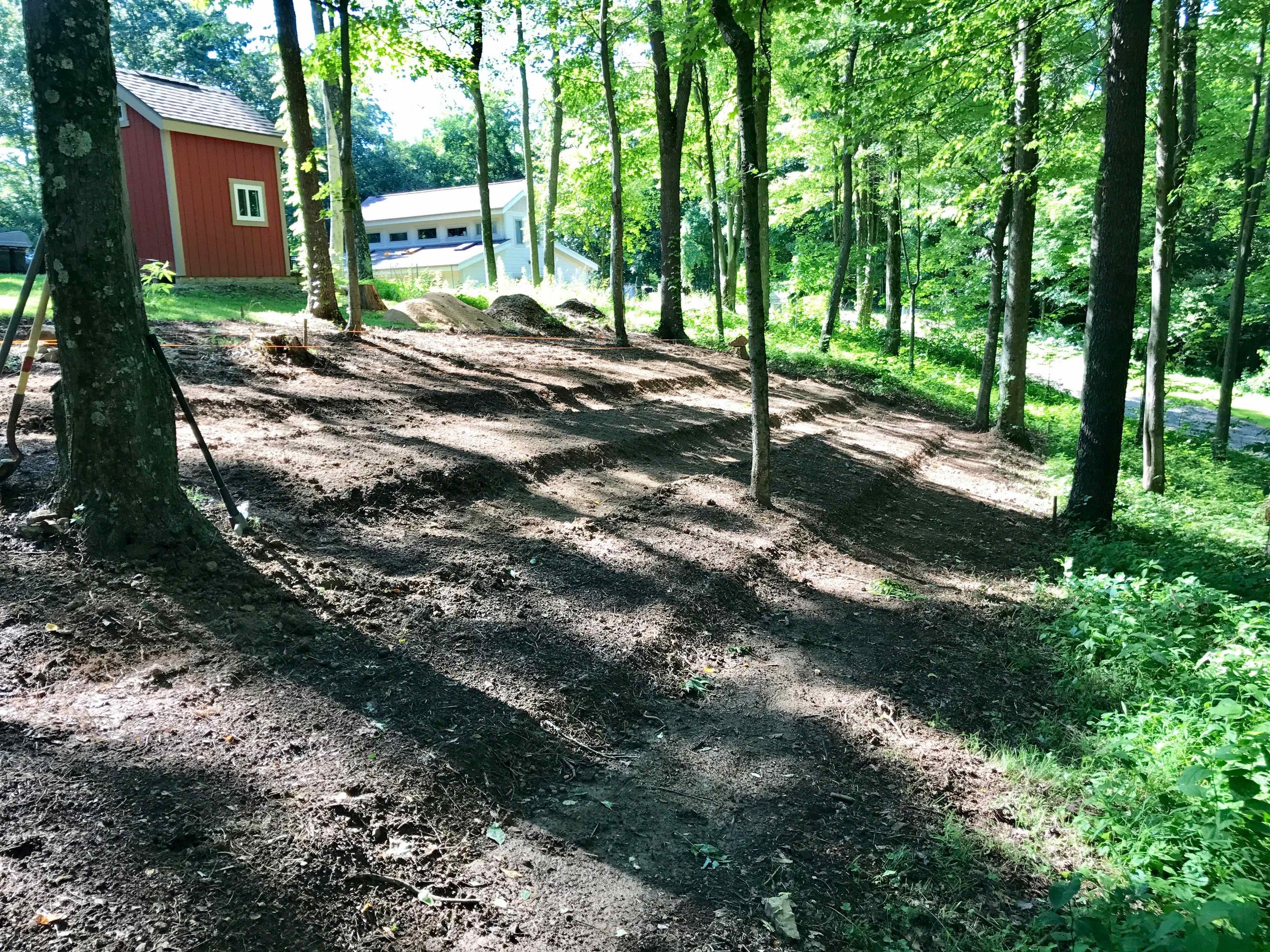
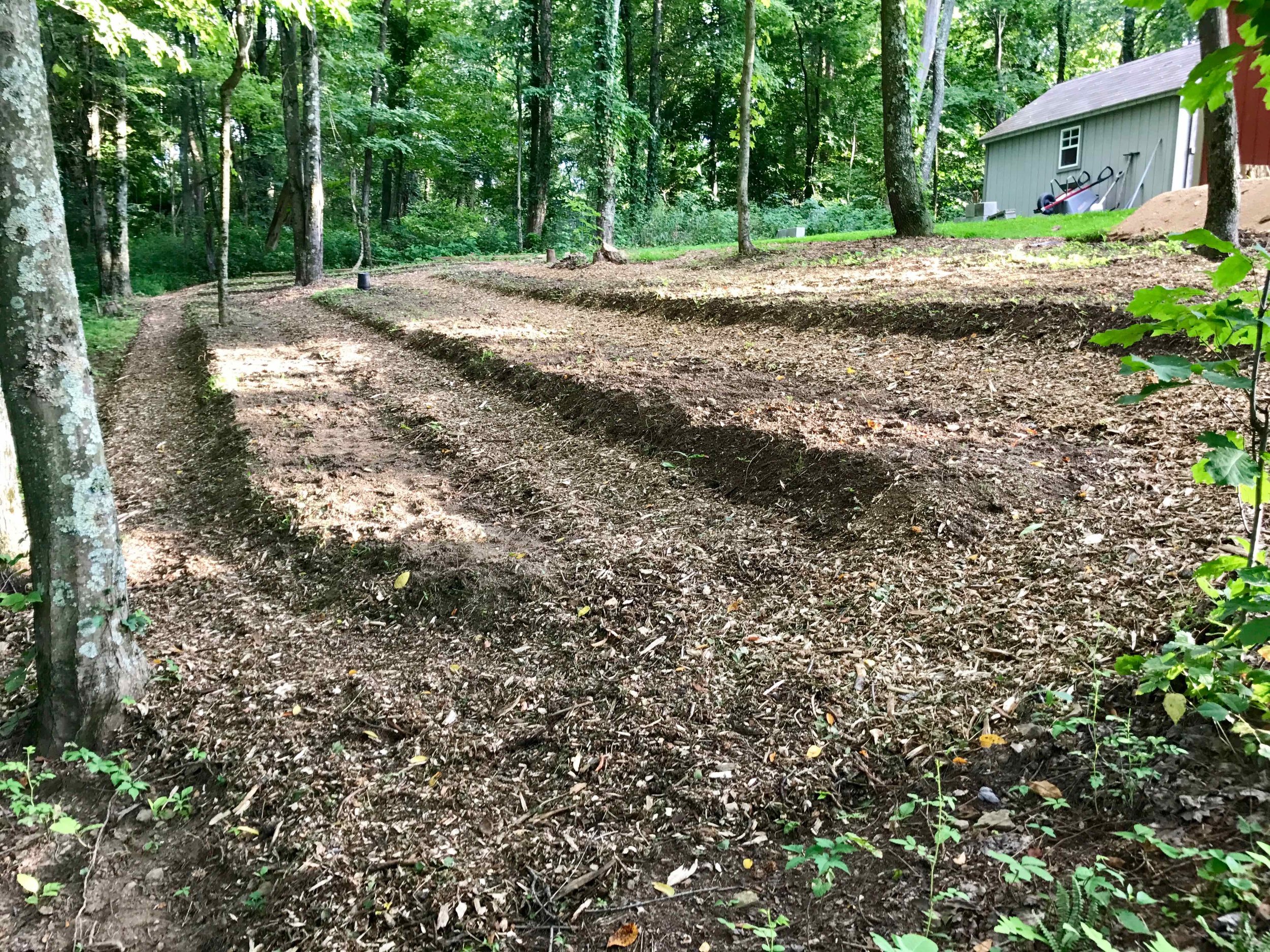
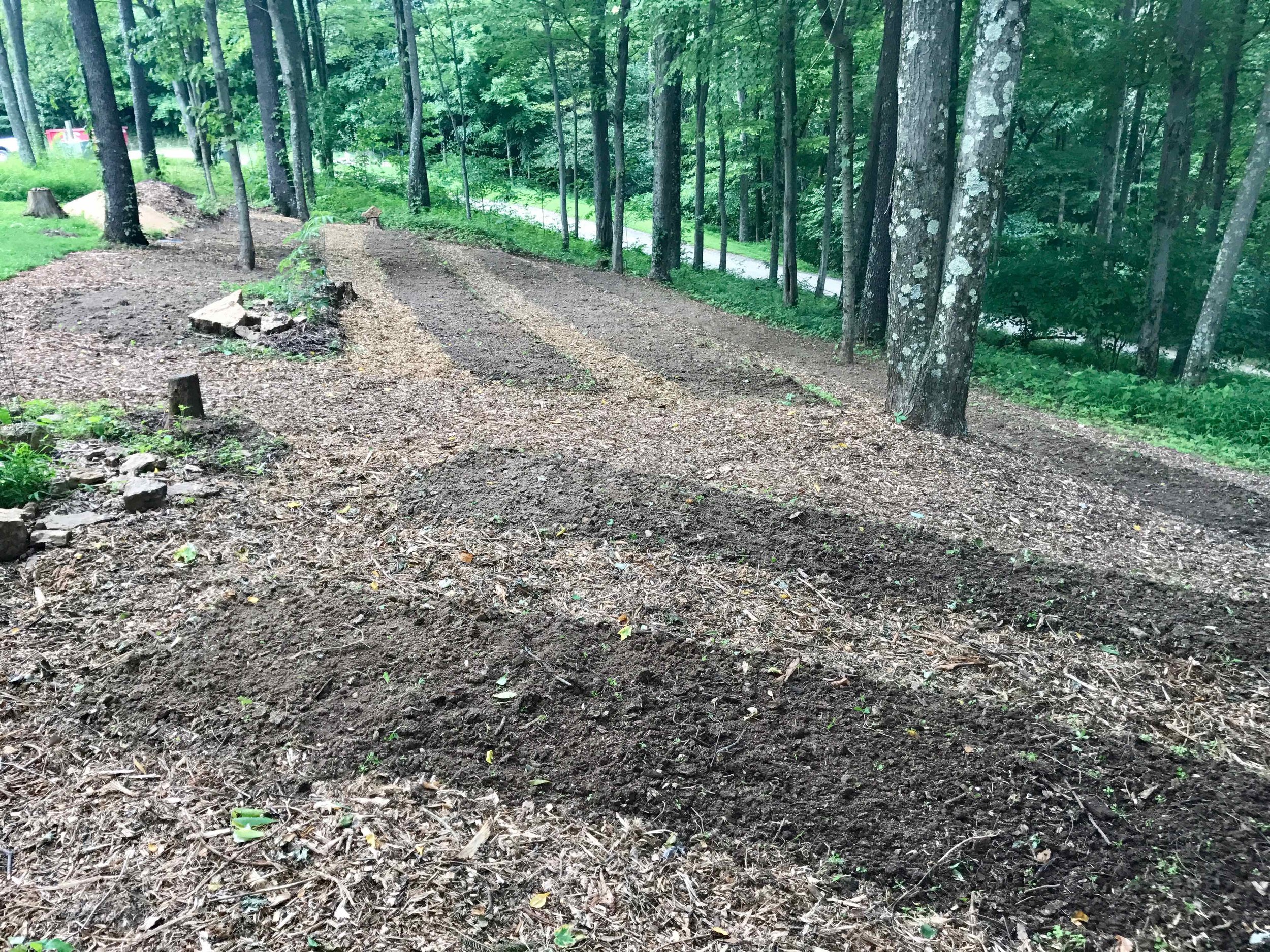
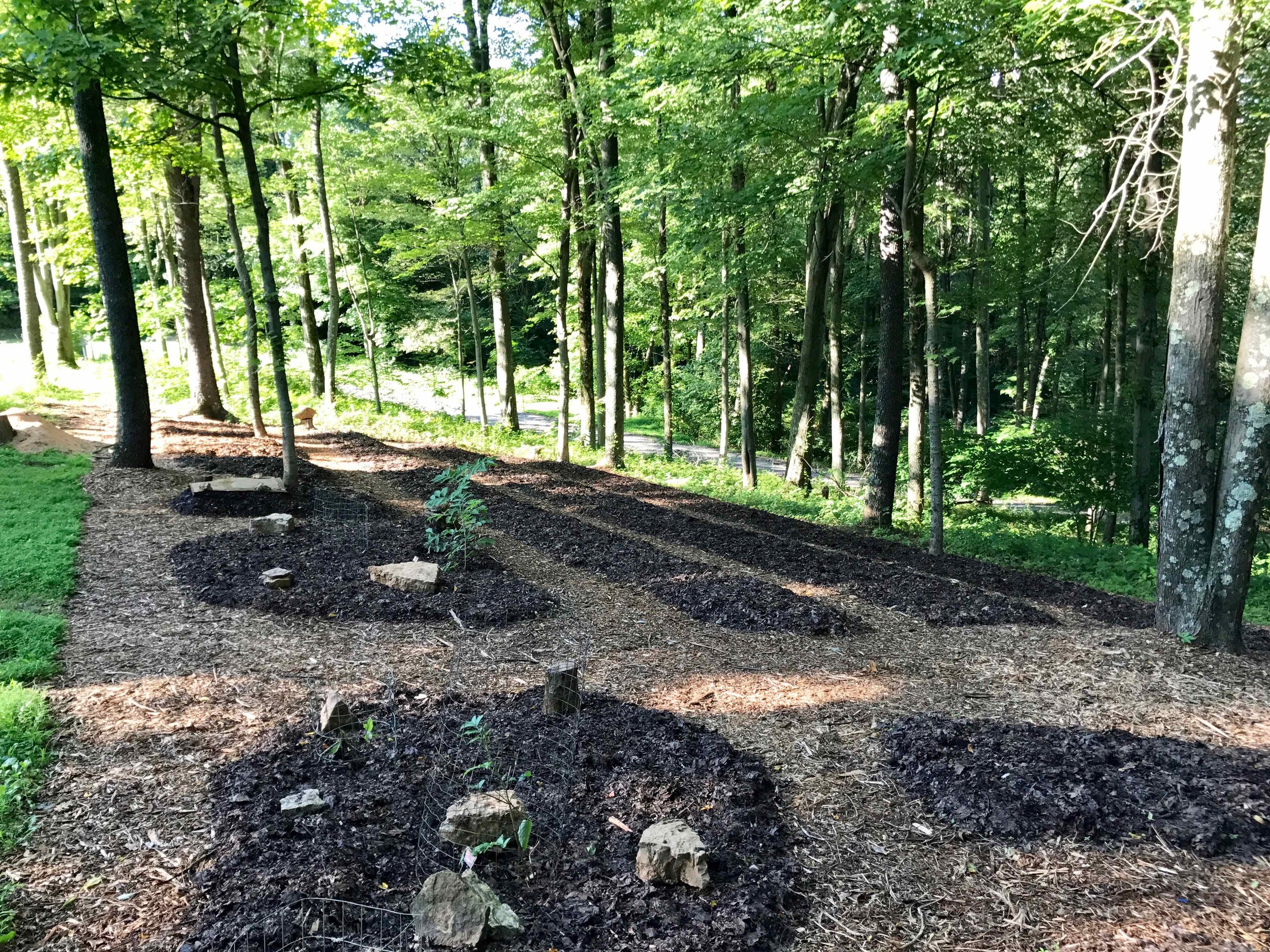
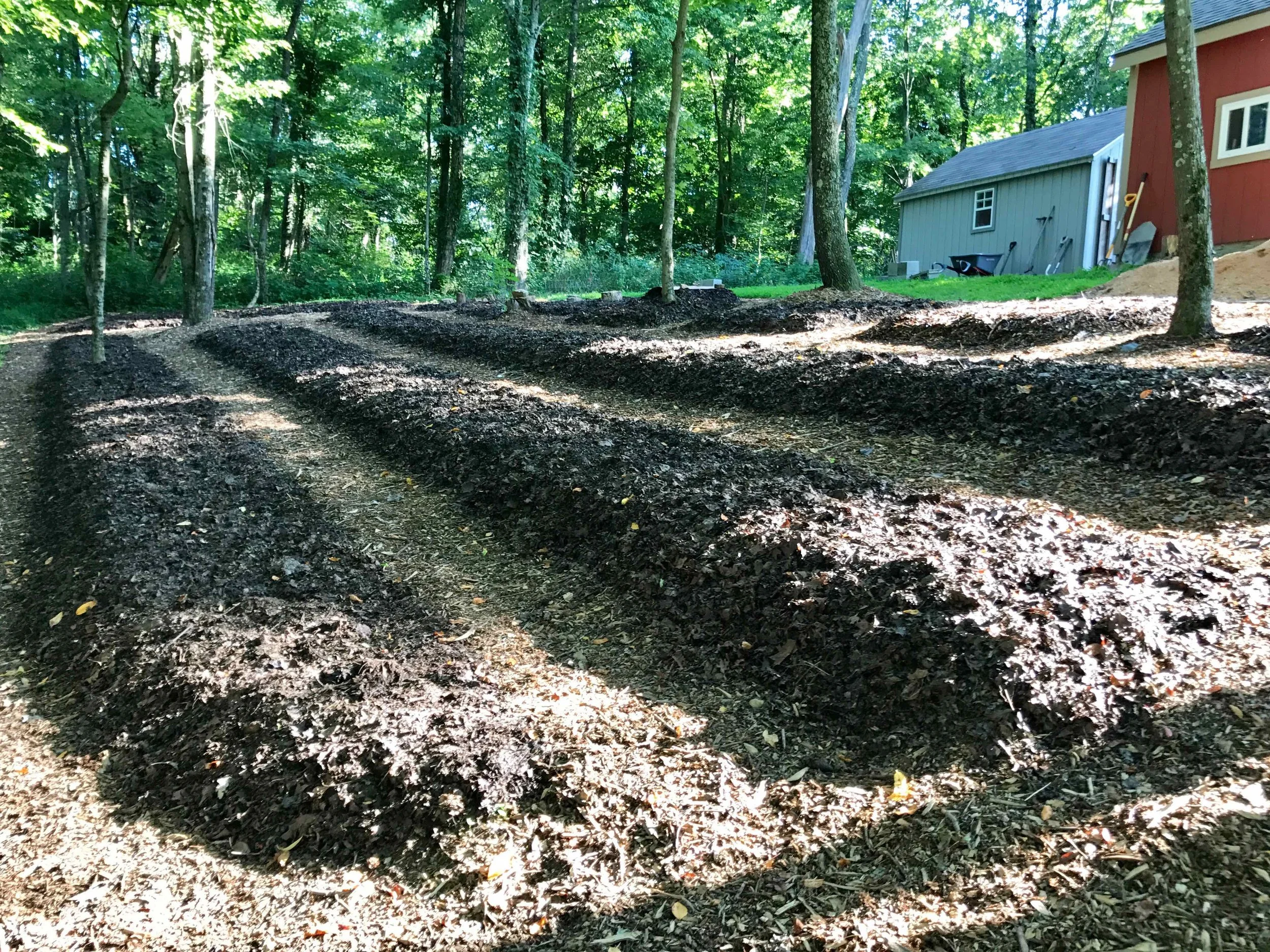
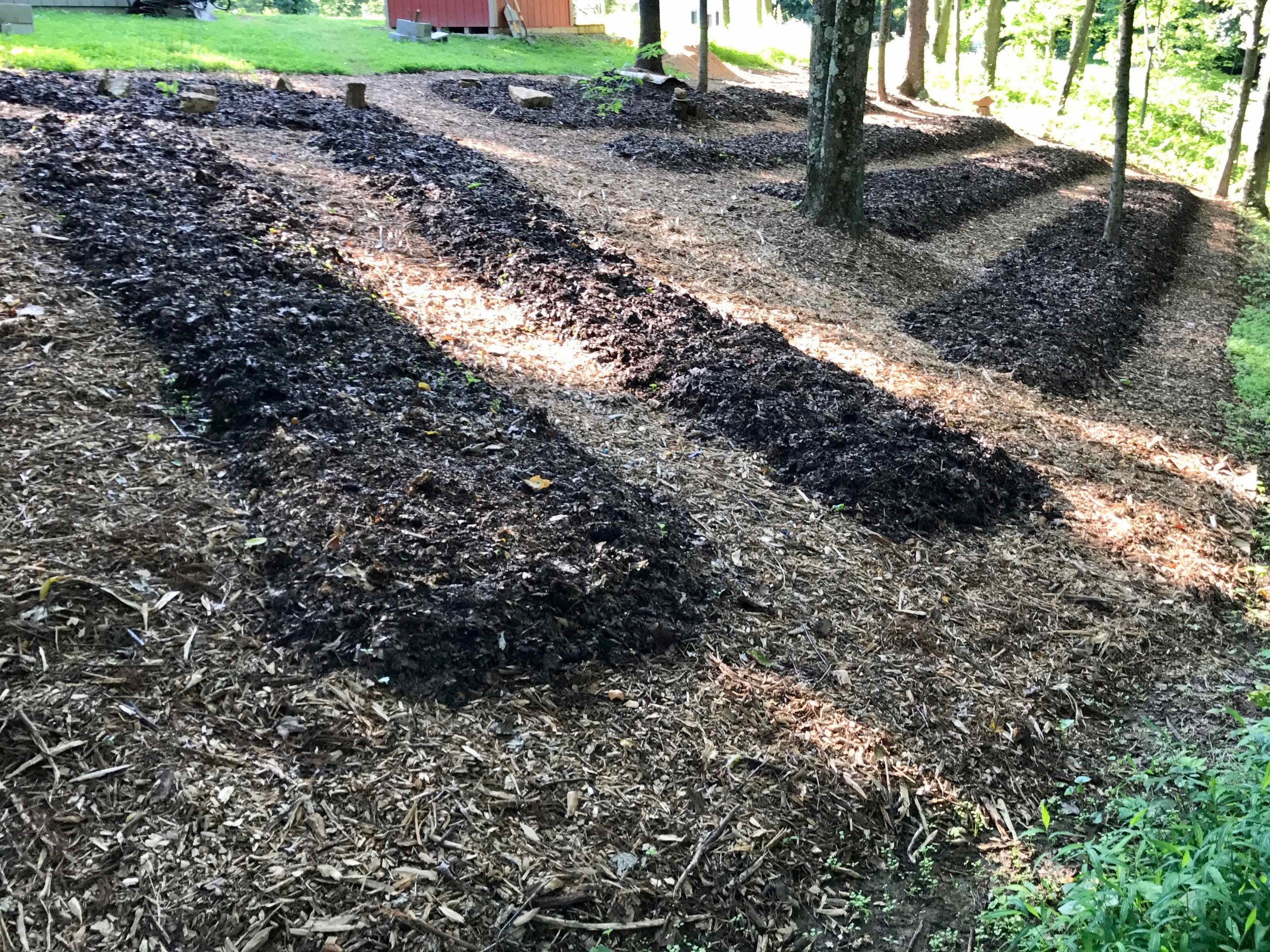
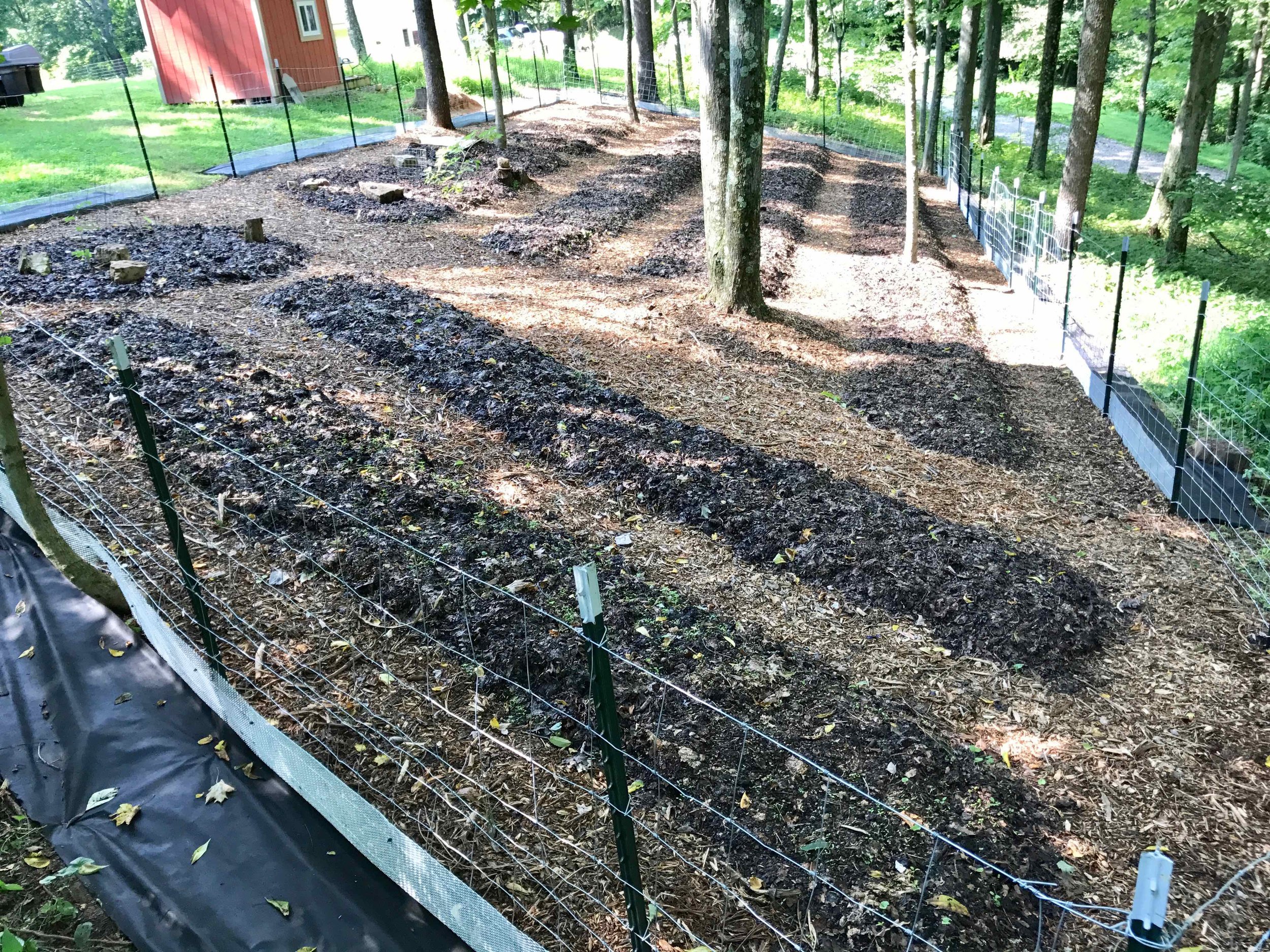

Pot-In-Pot Nursery Bed
In addition to the roots we planted into the natural soil of the nursery, we constructed a separate raised bed to hold about two-hundred 1-gallon pots planted with a variety of medicinal herbs including Black Cohosh, Blue Cohosh, Red Trillium and Bloodroot. These will be ready for sale as landscaping plants when they bloom in the spring.
After some research, we decided to use what's called the pot-in-pot system. First you bury an empty 'socket' pot up to about an inch below the rim. You then use an identical size pot filled with potting soil to transplant your dormant root into just like you normally would. Then you place the pot with the soil and plant into the empty socket pot in the ground.
Typically in the pot-in-pot system, a separate hole is dug for each socket pot, many times using an auger of some sort. In our case, we decided to build a raised bed, rather than dig holes into the natural soil. First, we wanted to keep the soil inside the bed isolated from the natural soil in order to reduce intrusion by weeds and pests. And of course, it also meant a lot less digging, which is never a bad thing.
The system has other advantages too: pots don't blow over - even in heavy wind; roots stay insulated from temperature extremes by the surrounding soil; there's less need for irrigation due to less evaporation loss; and plants are ready-to-go when they're needed, and any unused/unsold plants can simply be slipped back into their socket pot for later.
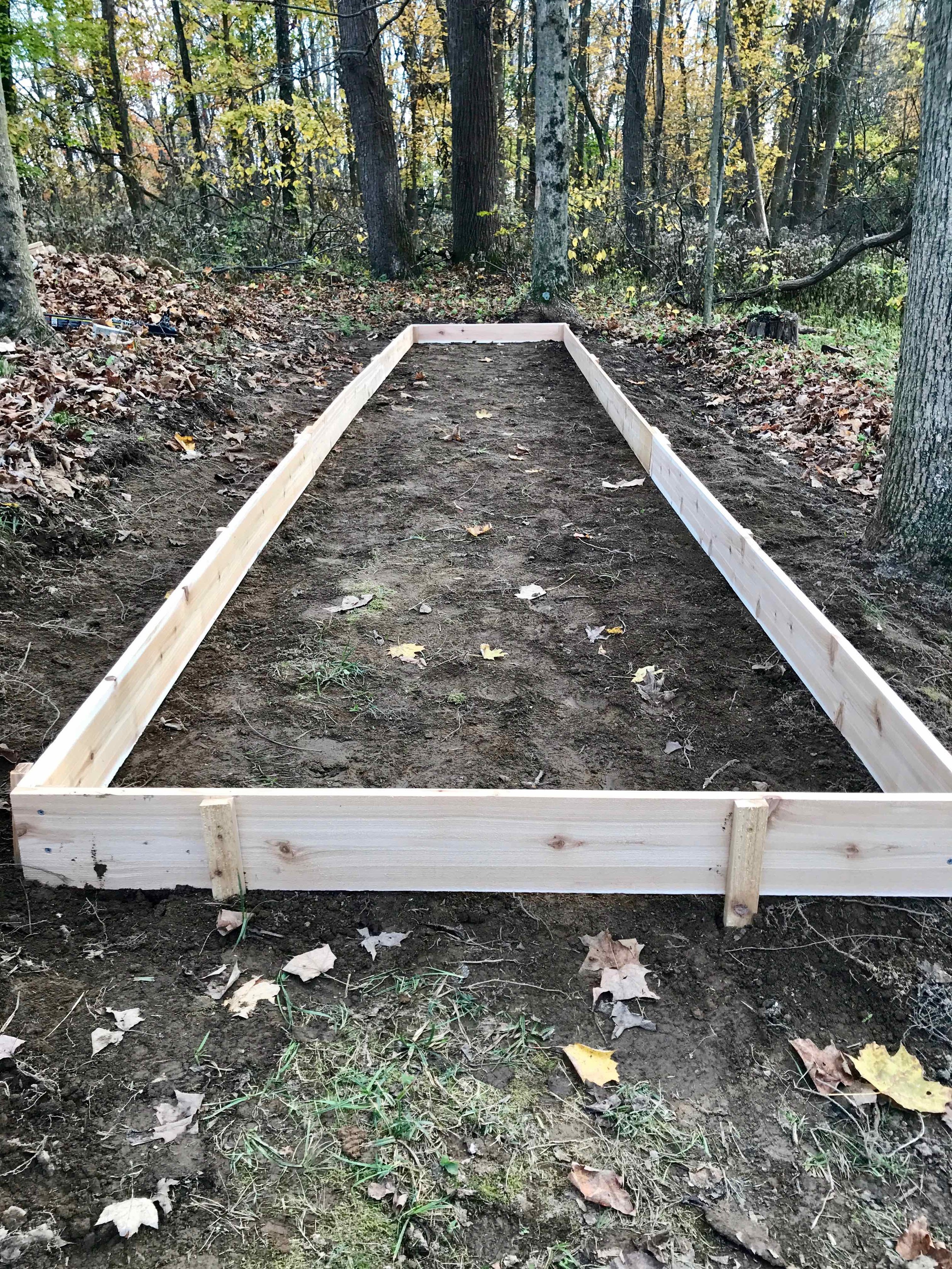
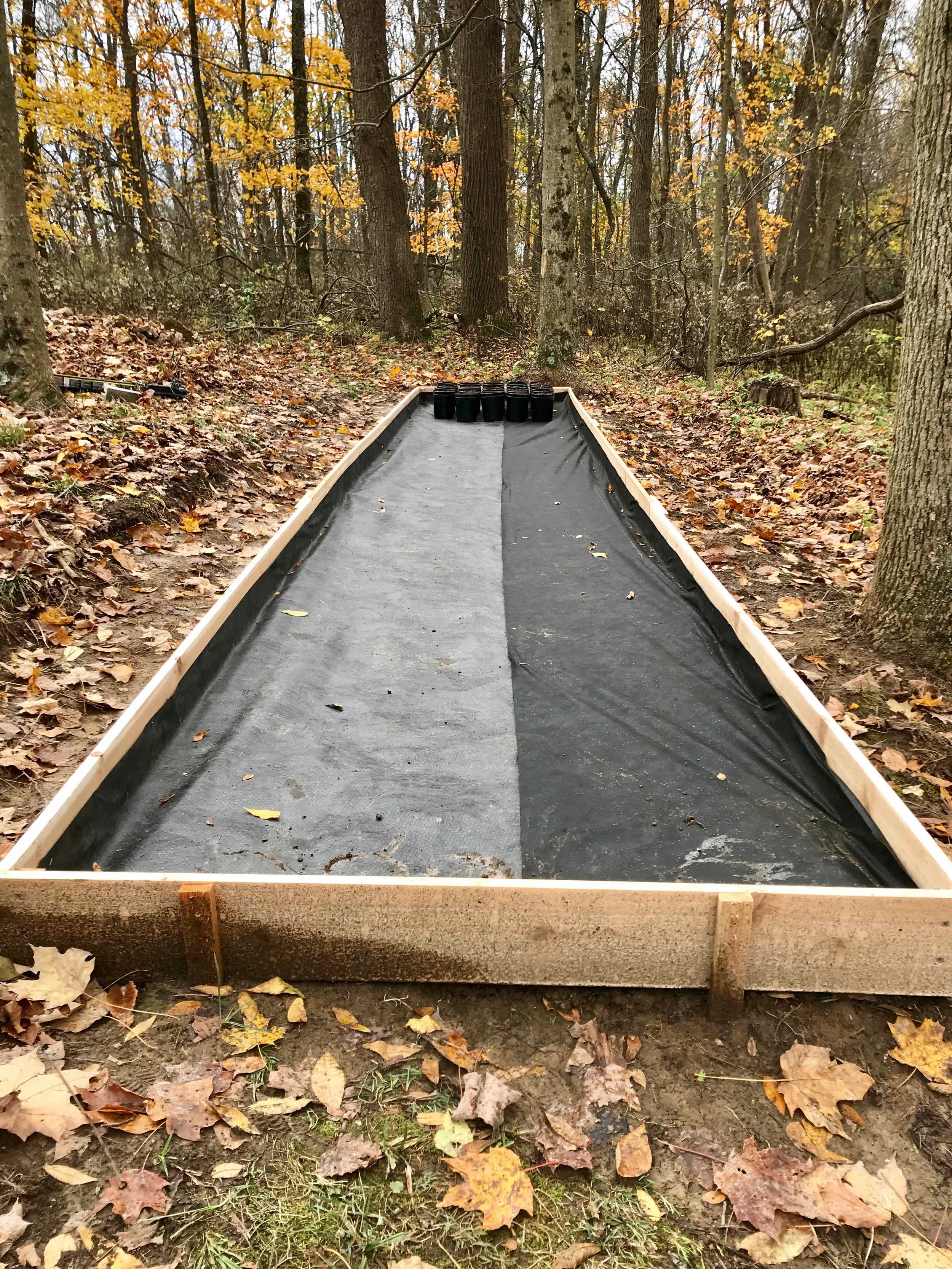
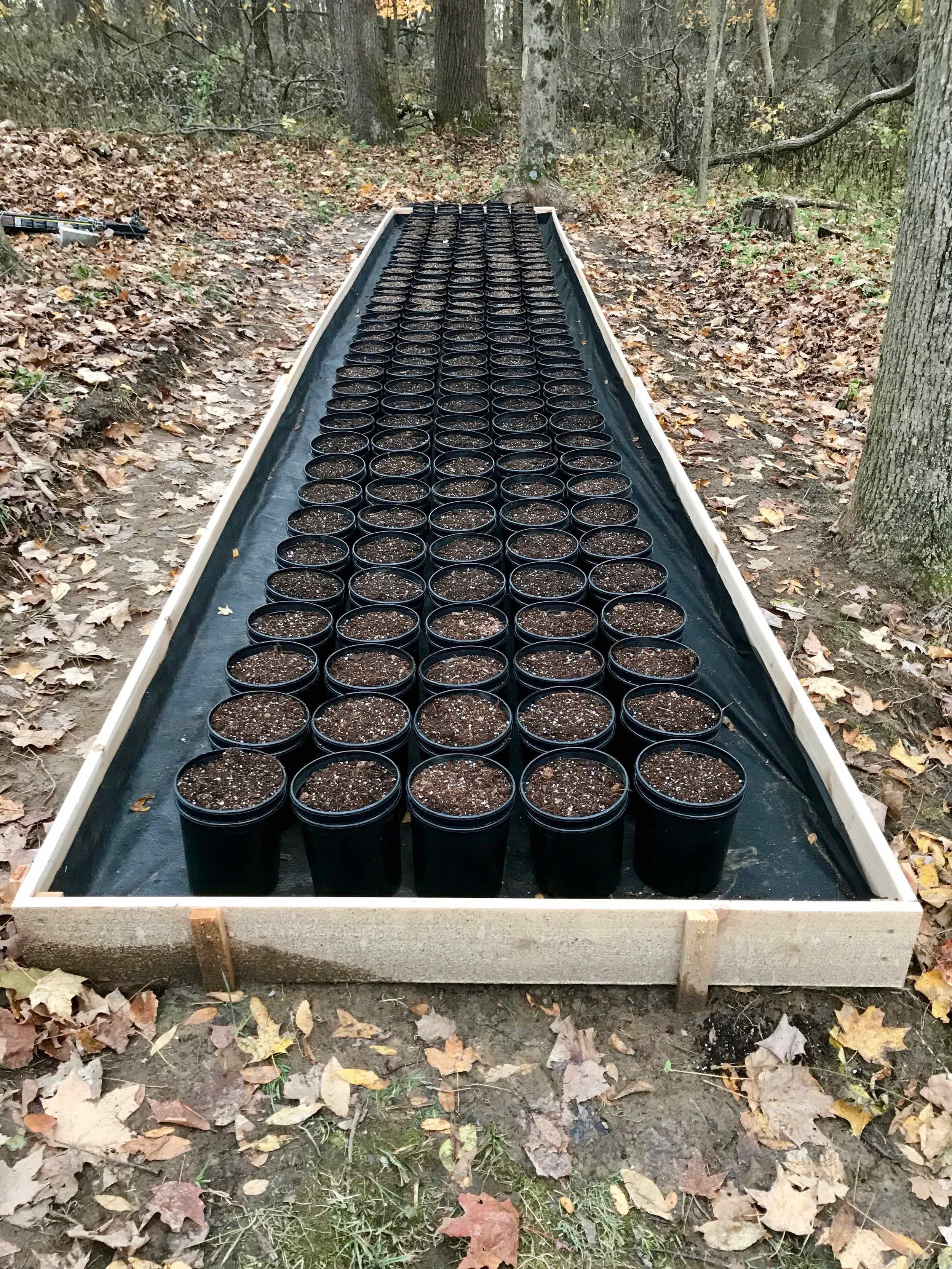
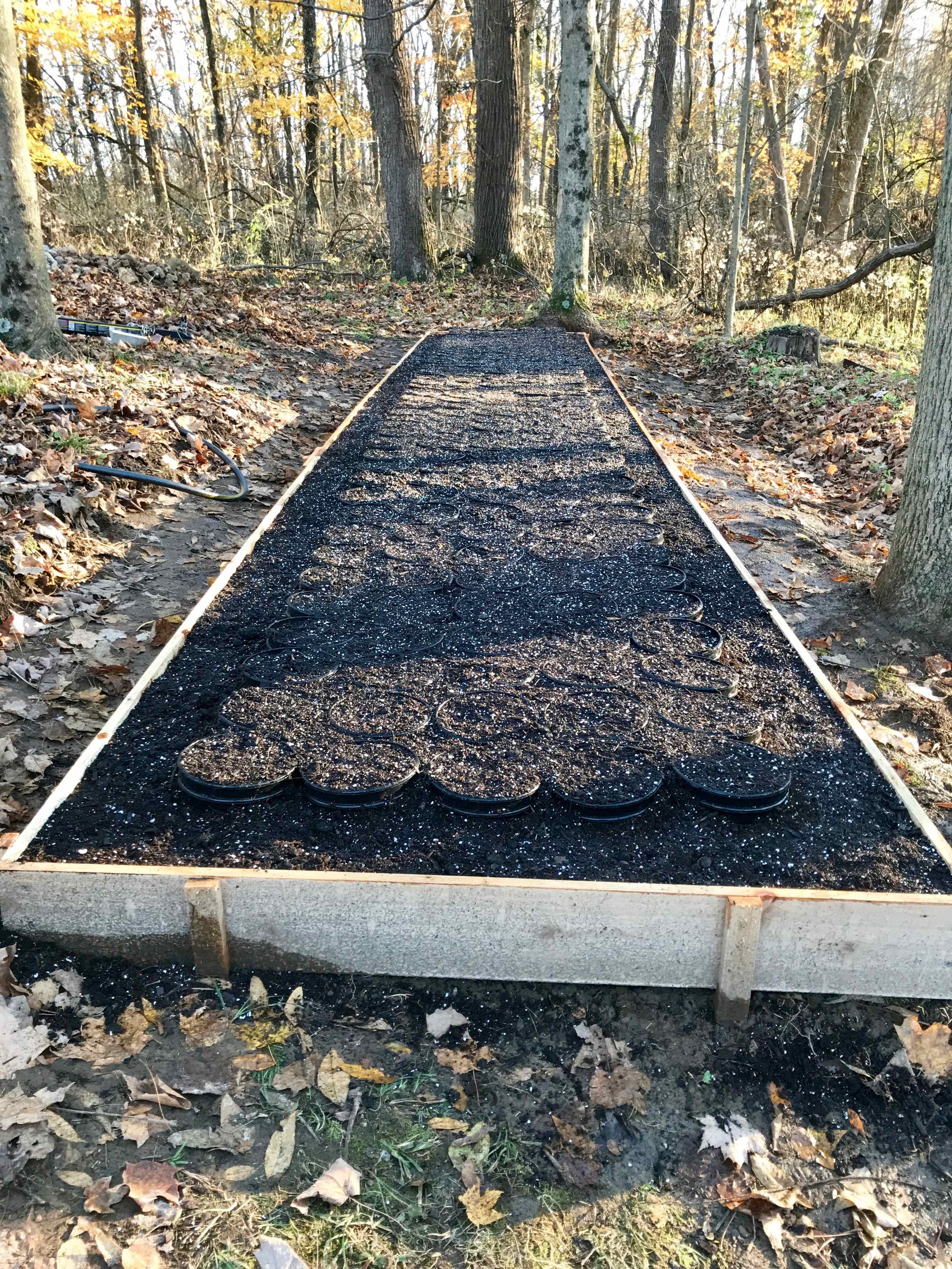
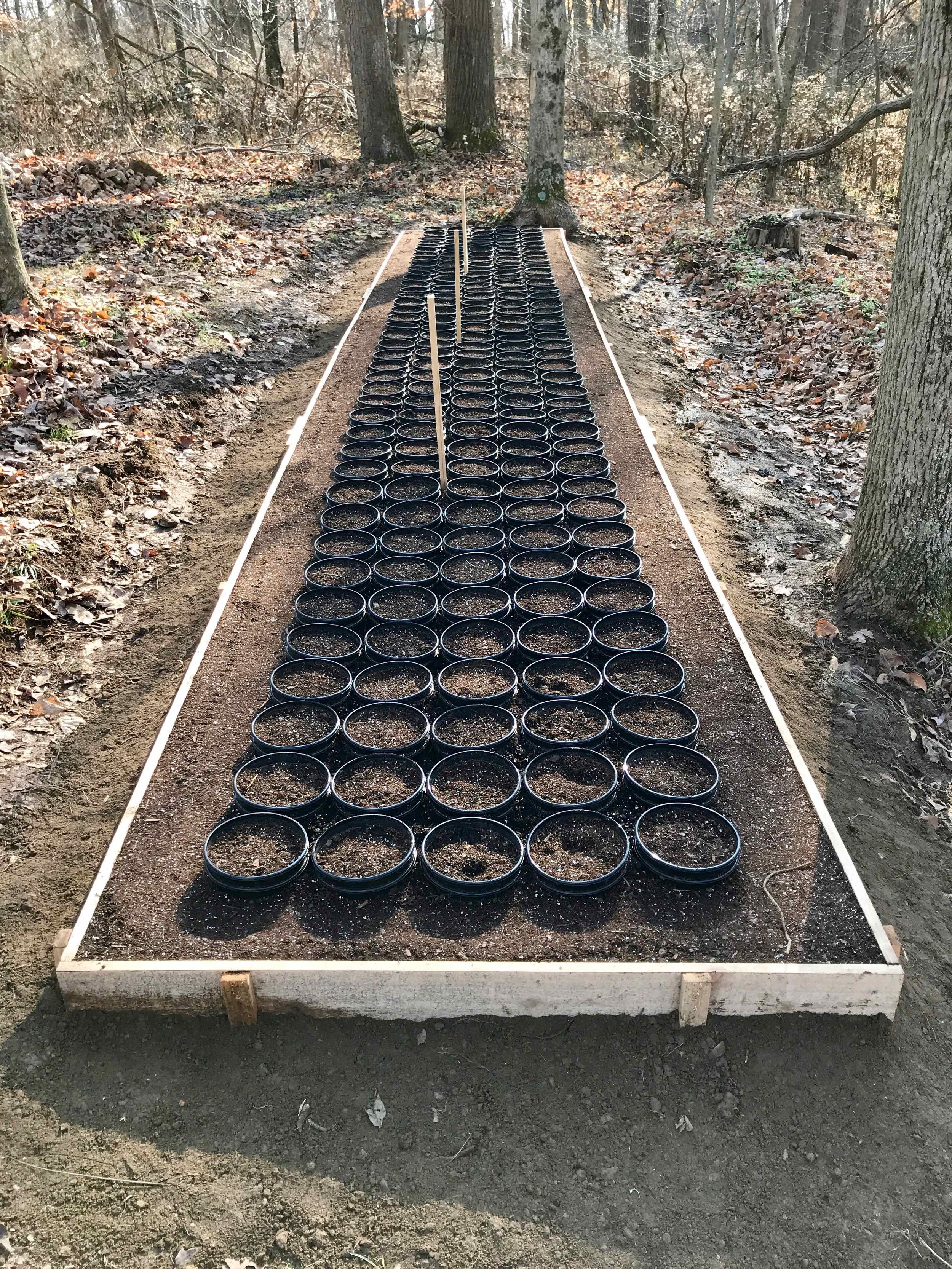
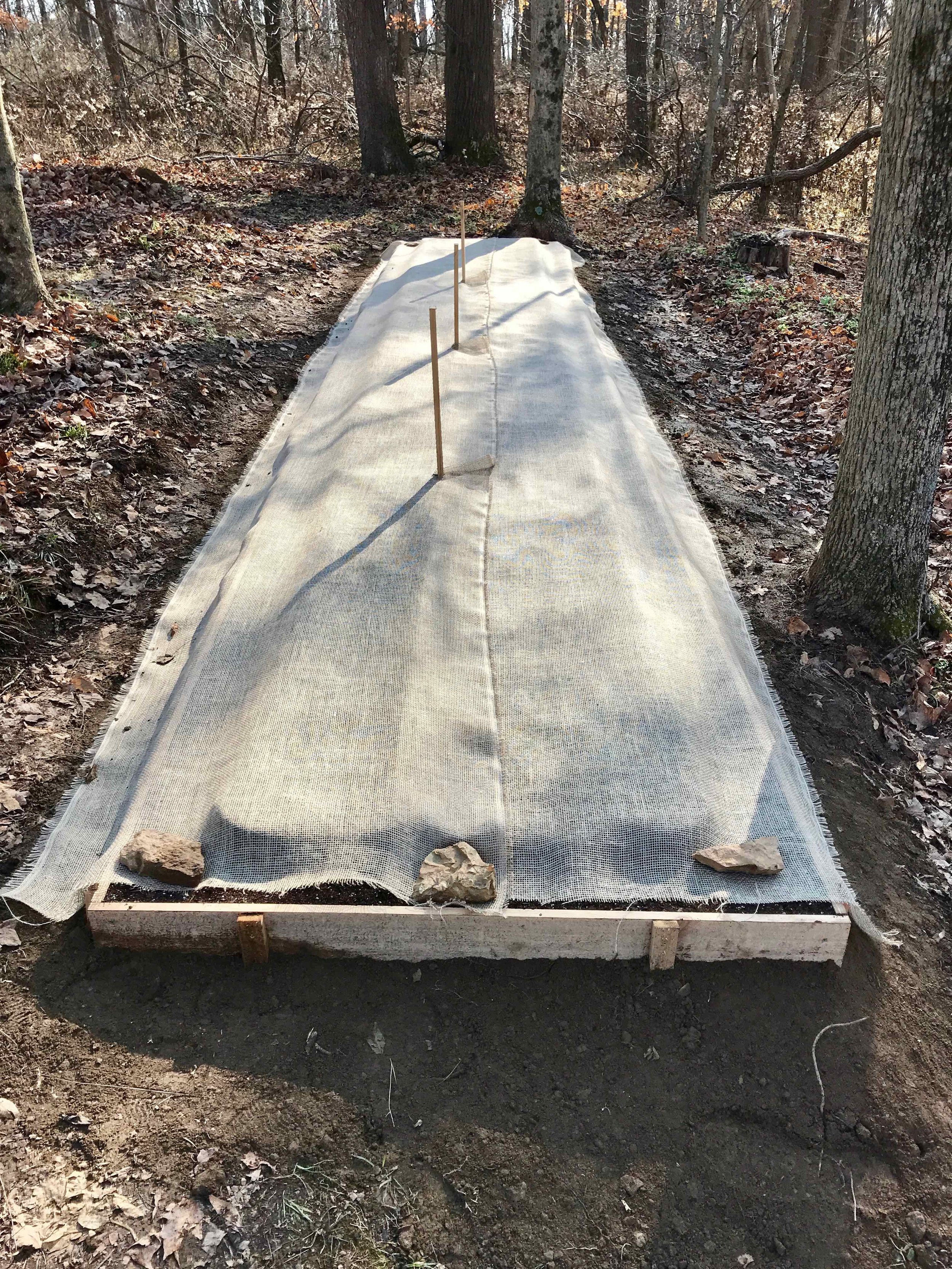
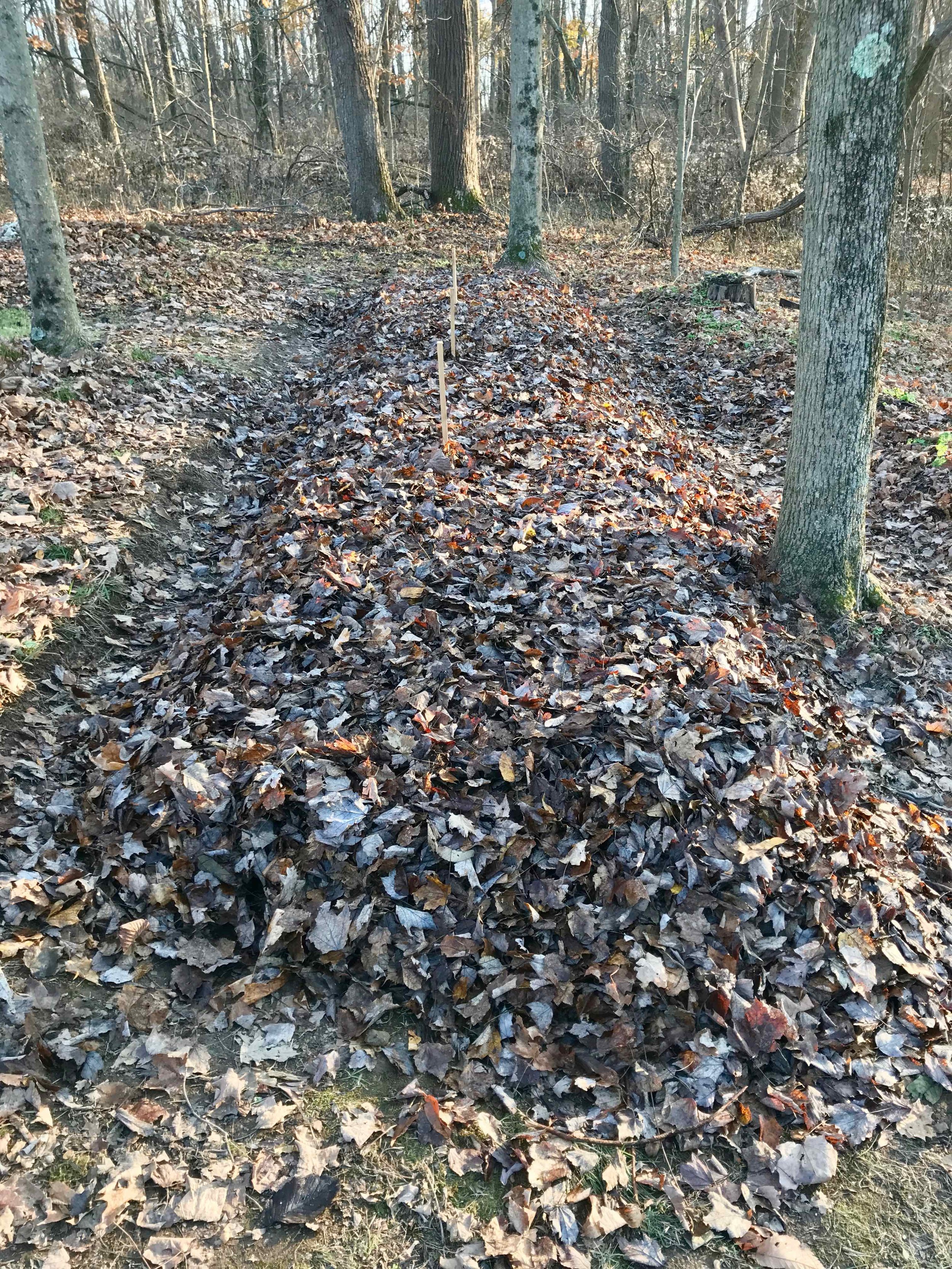
Shiitake Logs
We didn't plan to start cultivating Shiitake mushrooms until next year, but a generous offer of free oak logs made us adjust our schedule to make time for the project. The process is simple, but labor intensive. Start with freshly cut logs that are 3-8 inches diameter and 3 feet long. Drill a series of shallow holes all around the log. The mushroom spawn comes mixed into moist sawdust that's formed into a block. You pack the spawn tightly into the holes. You then seal the holes with cheese wax to keep moisture in and wild fungus out. The logs then get stacked in the shade for 6-12 months until they start to produce mushrooms. More to come on that next spring...
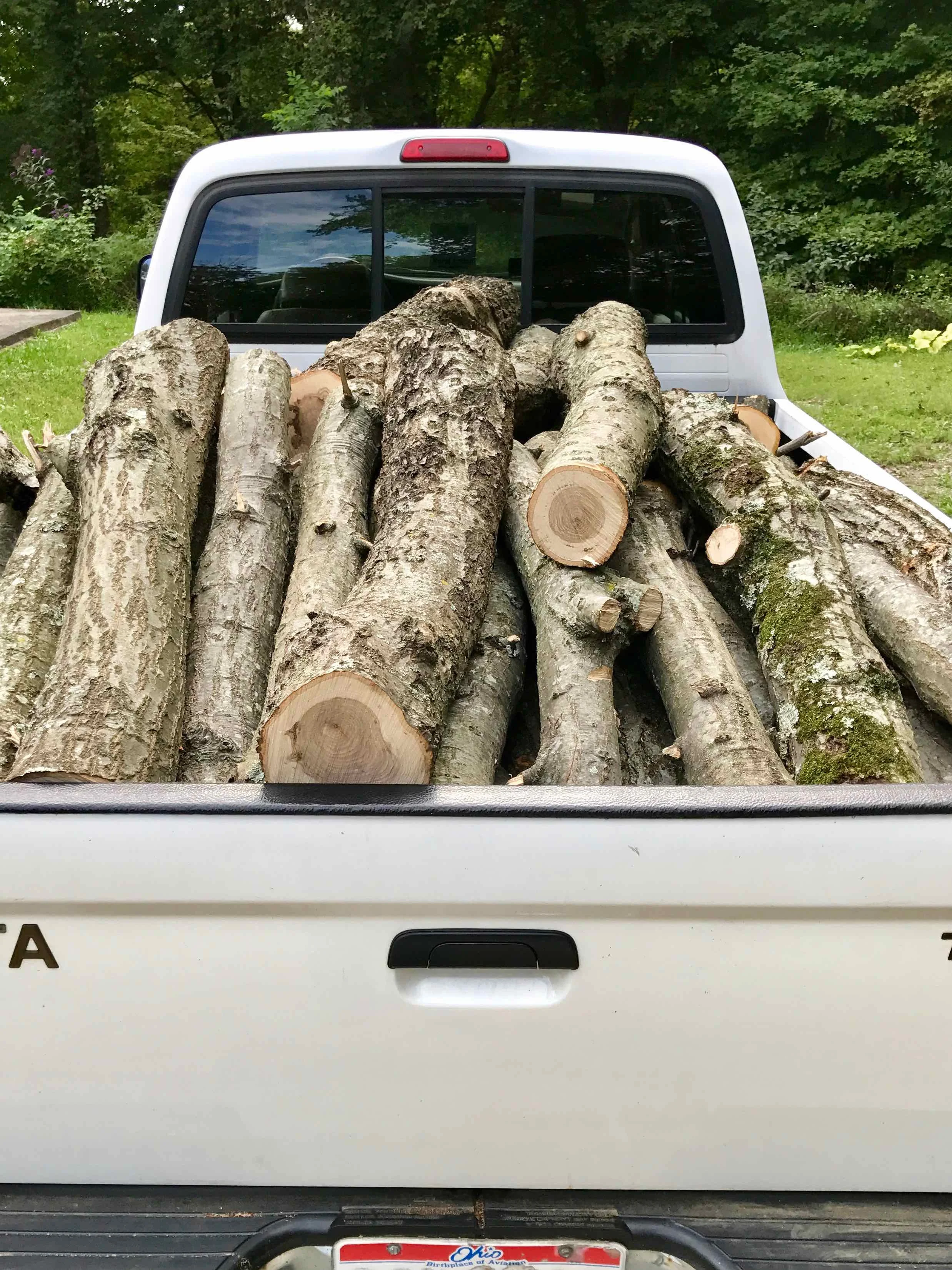
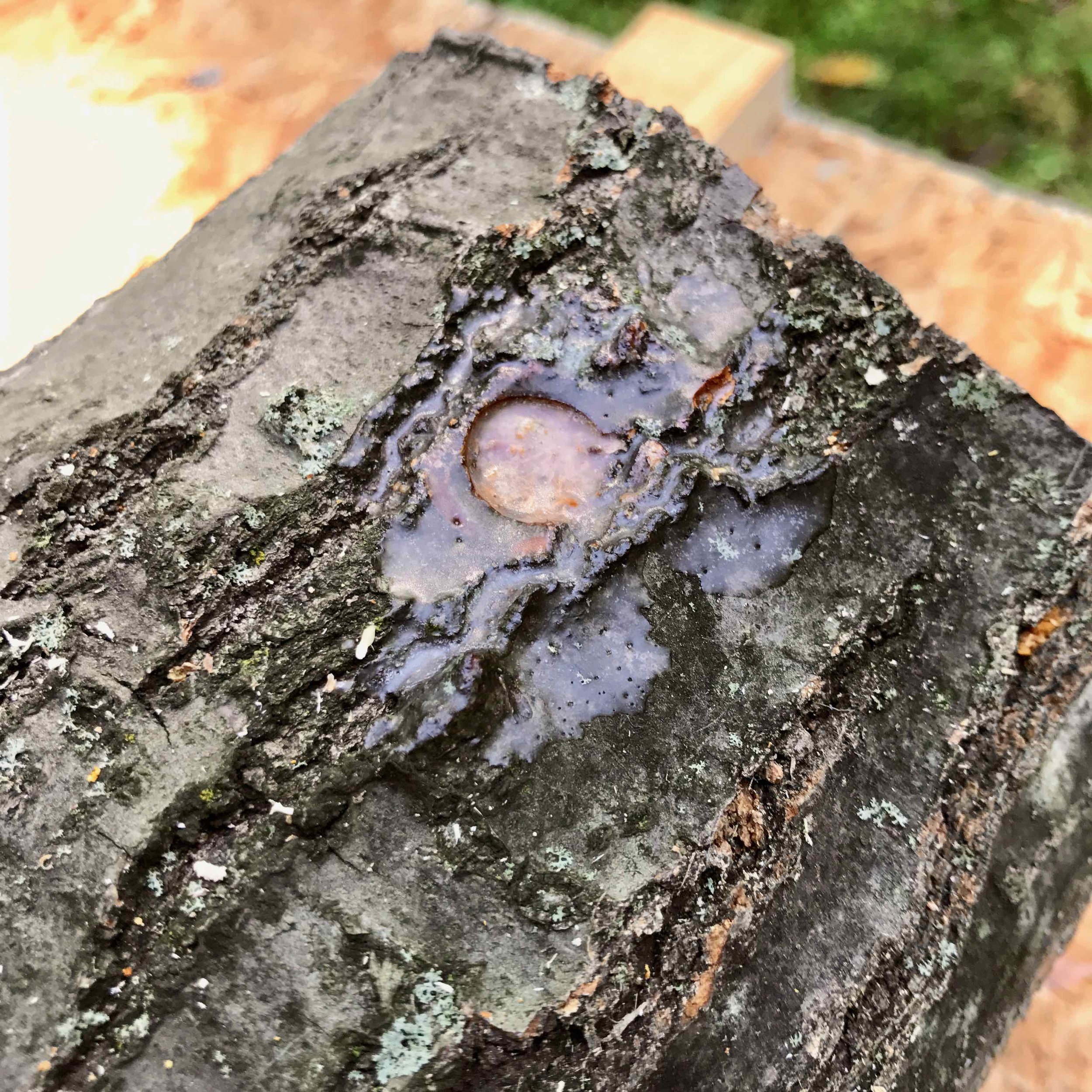
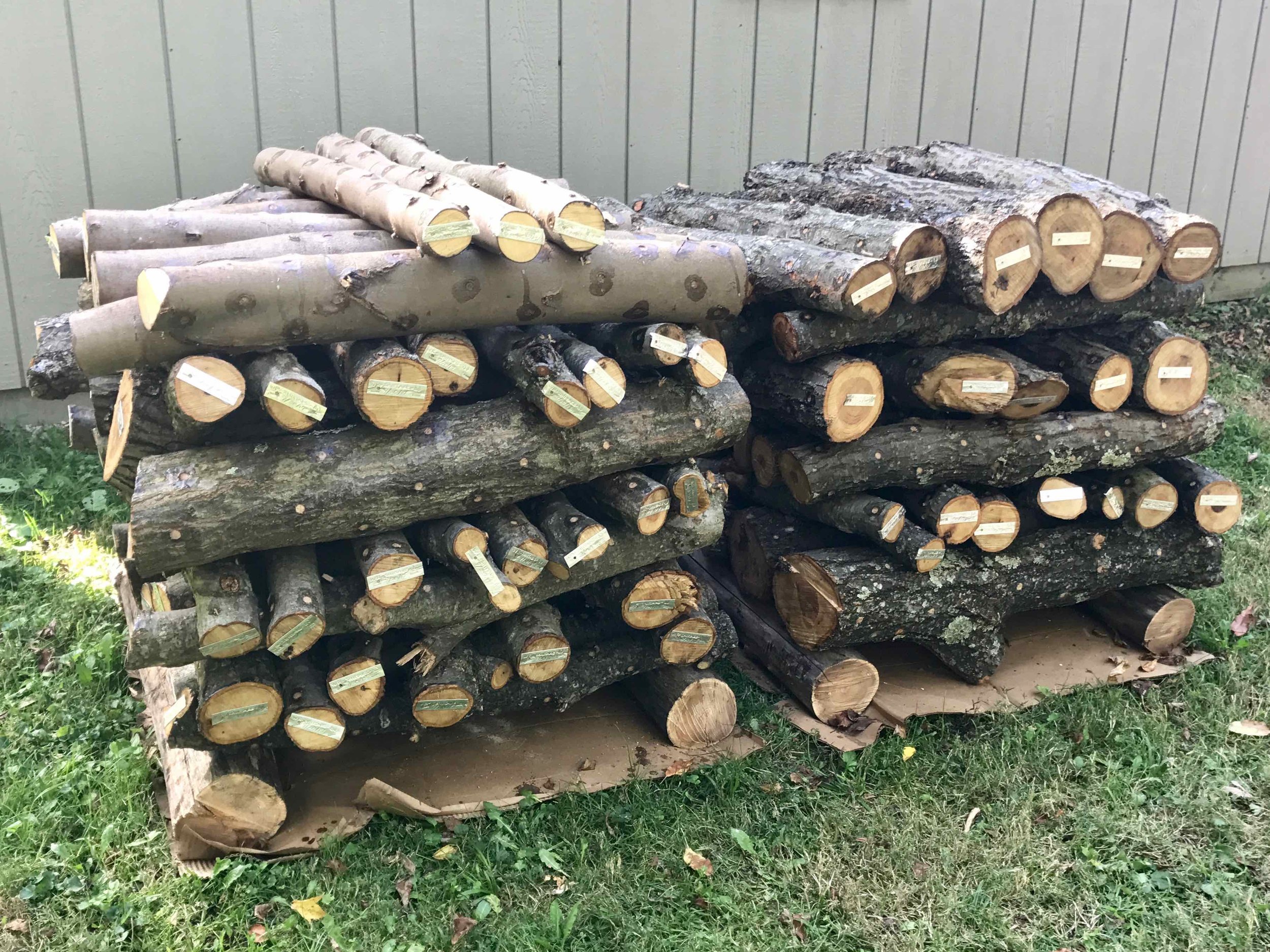
New Garlic Beds
I might have mentioned before that we really love garlic. In the past we've grown it in our vegetable garden near the house. It worked out well - good soil and close at hand. But this year we decided to expand both the number of varieties and the amount of each variety, so we created a new area of beds just for garlic. We hope to build another similar sized plot each year until we have a total of four plots, so we can rotate our garlic crops each year, letting the soil rest between plantings. When the beds don't contain garlic, we plan to grow other medicinal herbs in them like calendula, clover and chamomile.
This year we planted five types of hardneck garlic, three of which are new to us. We now offer Spanish Roja, Russian Red, Music, Polish Hardneck and Penn Wonder. We also planted a large amount of Idaho Silver, our first softneck variety. Softneck garlics can be braided into amazing shapes, they have a bunch of small cloves instead of a few large cloves (which gives flexibility if you don't use a lot), and they store much longer than hardnecks, remaining tasty up to a year or longer, as opposed to 6-8 months for hardneck varieties. We started with new certified organic planting stock this year from Filaree Garlic Farm. We expect to harvest in July, and by August the bulbs should be cured and ready for sale.
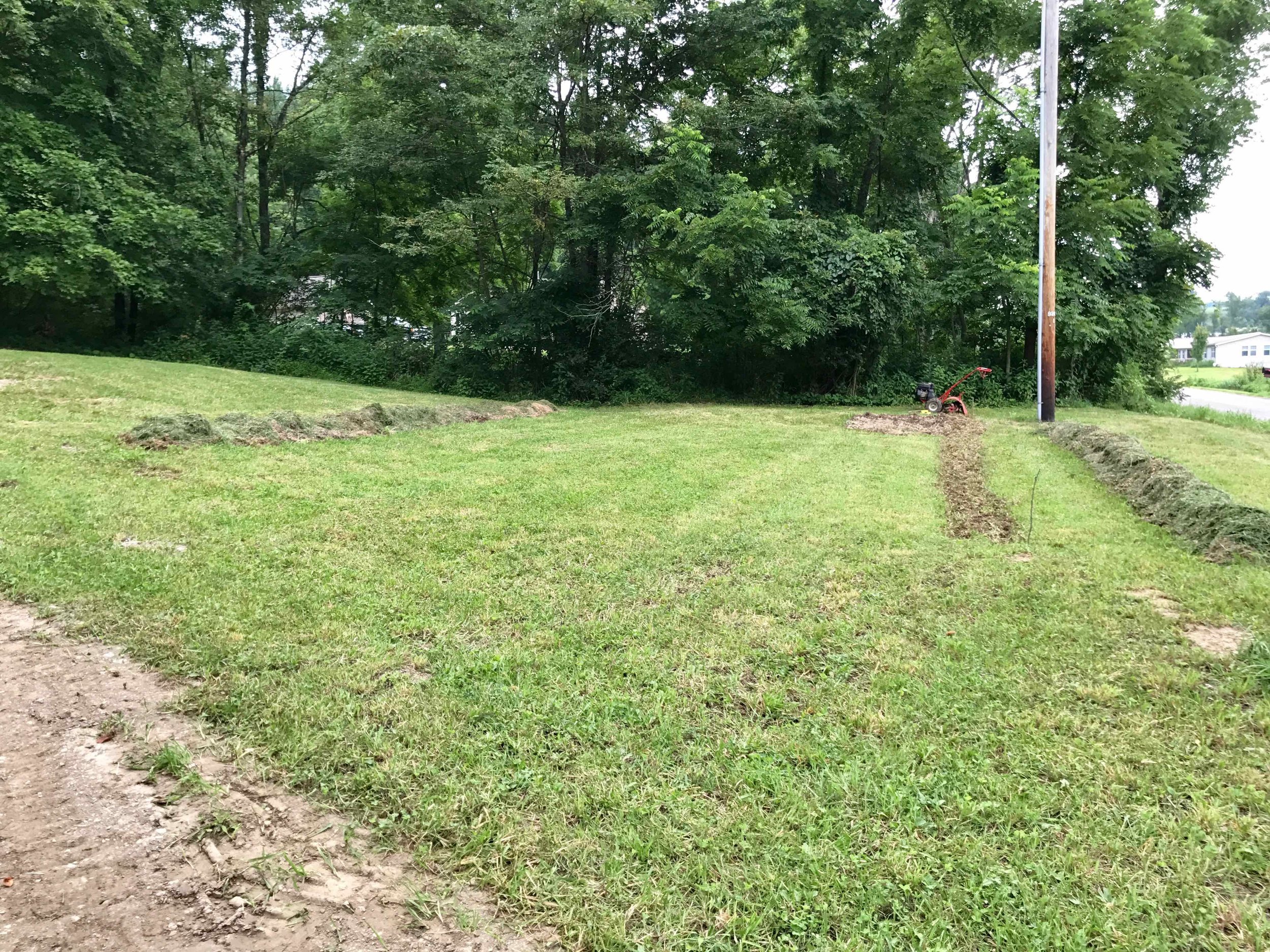
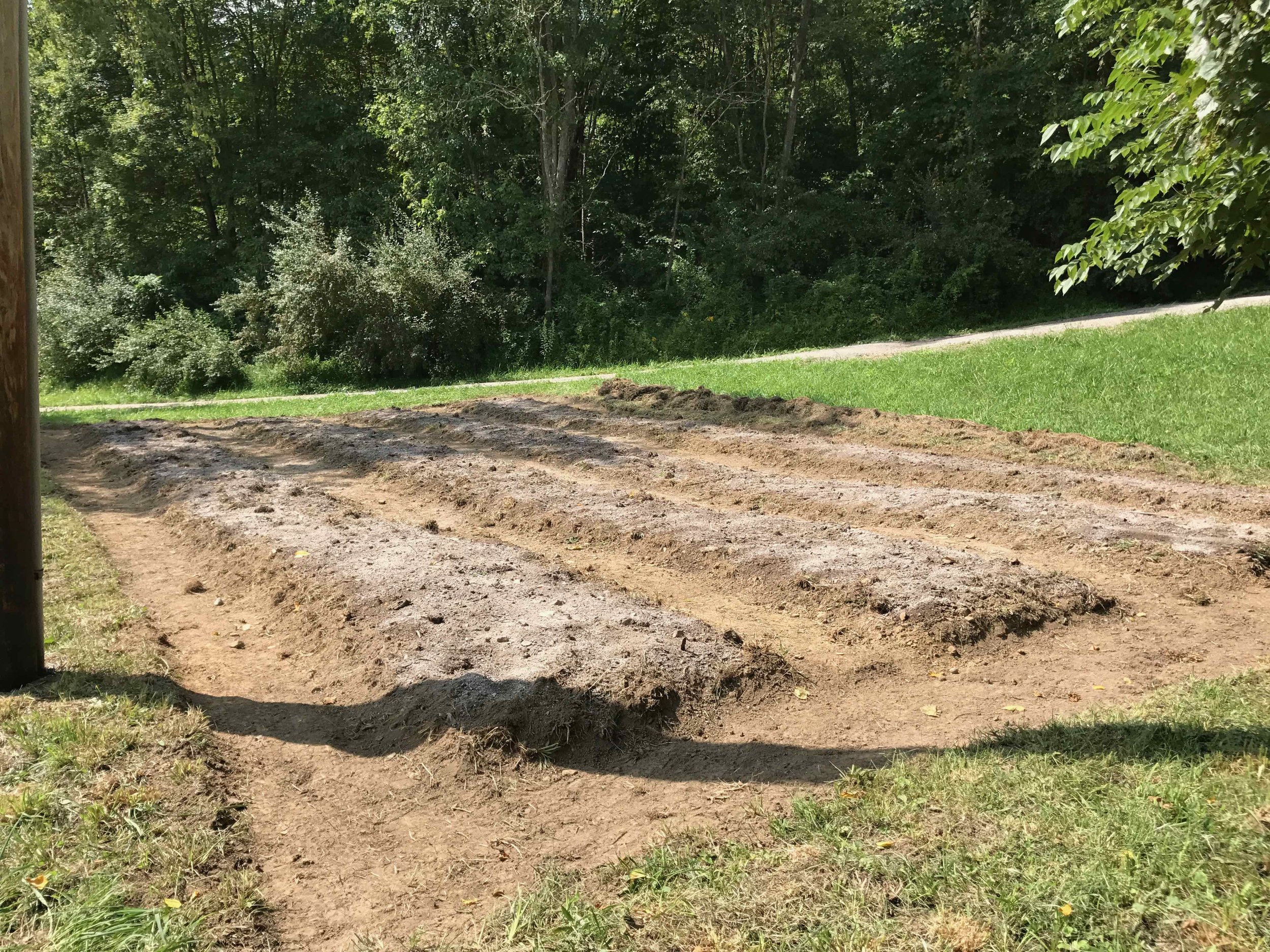

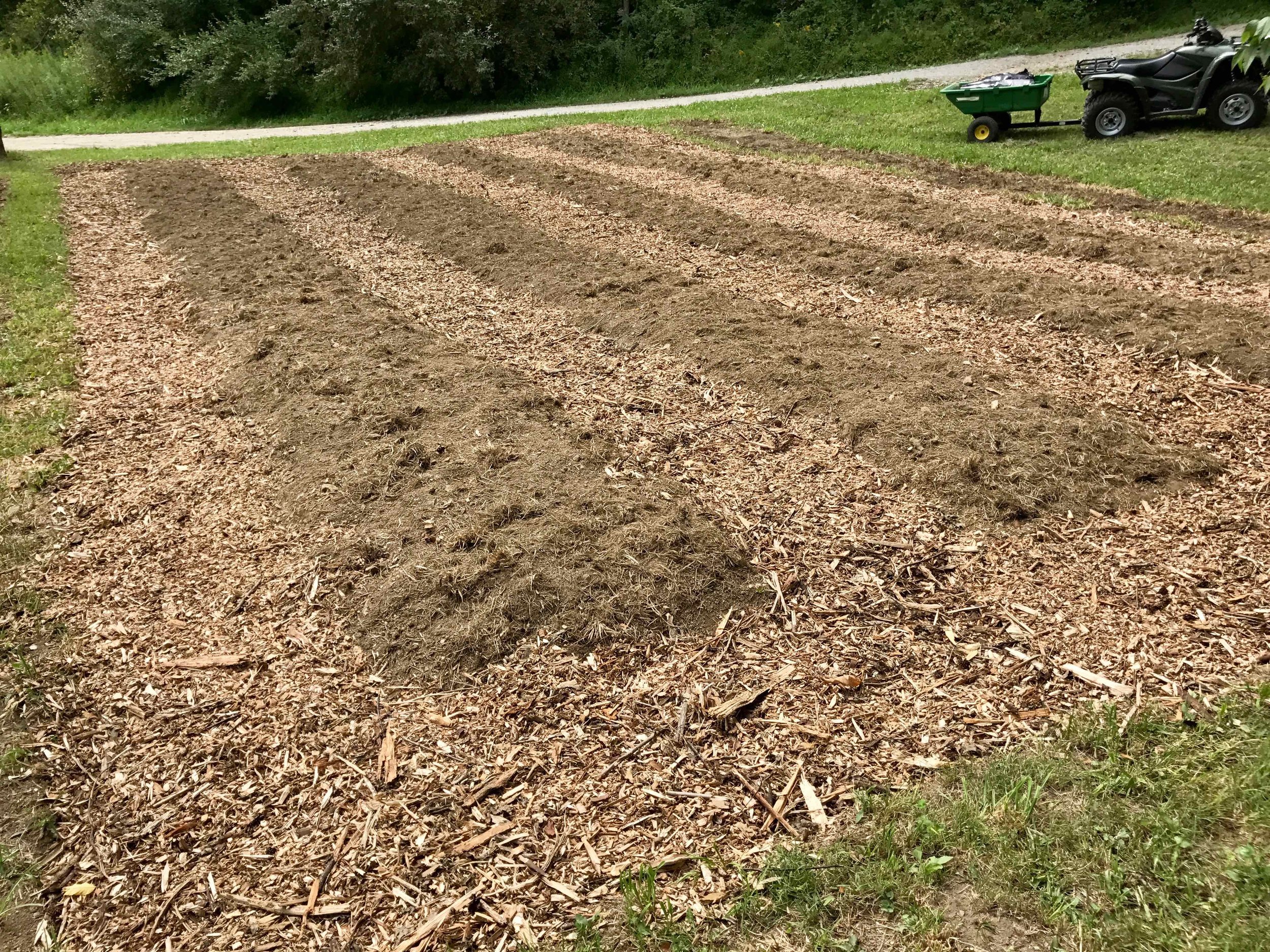

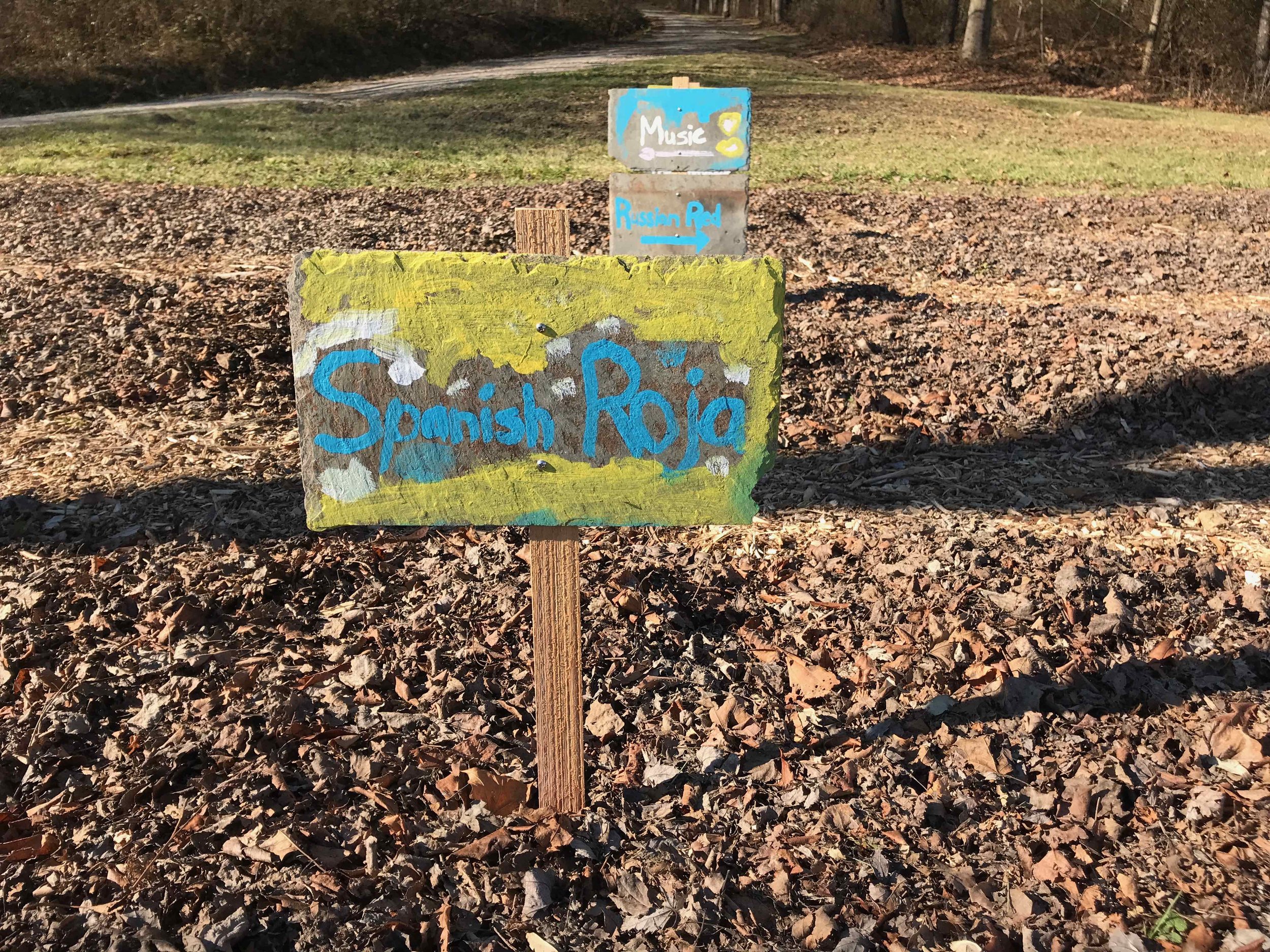
Looking Ahead to 2018
As we catch our breath for the season, we're already looking ahead to next year. In many ways, 2018 looks a lot like 2017. We'll still be planting a lot of ginseng and other medicinal herbs. We plan to inoculate a few hundred more shiitake logs. We'll have ramps in early spring, and garlic later in the summer.
But 2018 will be a year for new growth too. We will be bringing our first products to market throughout the season - stay tuned as we should have more announcements on that soon. We will also continue to diversify our offerings, adding more varieties of mushrooms like oyster, reishi and lion's mane; adding False Unicorn, Pinkroot and Jack-In-The-Pulpit to our medicinal herb collection; and experimenting with new crops like elderberry, paw paw and maple syrup.
Also coming in 2018, we'll be focusing more on the 'business side' of our business. We will be partnering with Rural Action and United Plant Savers in a program funded by a USDA grant they were awarded to develop a long-term plan for our forest farm. They can help us estimate what we have growing now, and develop a plan for future planting and harvesting. They assist in matching industry buyers with growers like us, and help in establishing prices. And they can help us develop standardized planting and harvesting procedures tailored to industry needs. These are both great organizations and we're very excited to be able to participate in the program. We feel like it's the right help at the right time as we continue to grow.
Finally, as we wrap up the first year on our farm, we'd like to personally thank all of you for your kindness and encouragement. Your support means more than you know. We wish you all the best in the year to come.
Thanks Again,
The Felumlees
Mayapple Farms
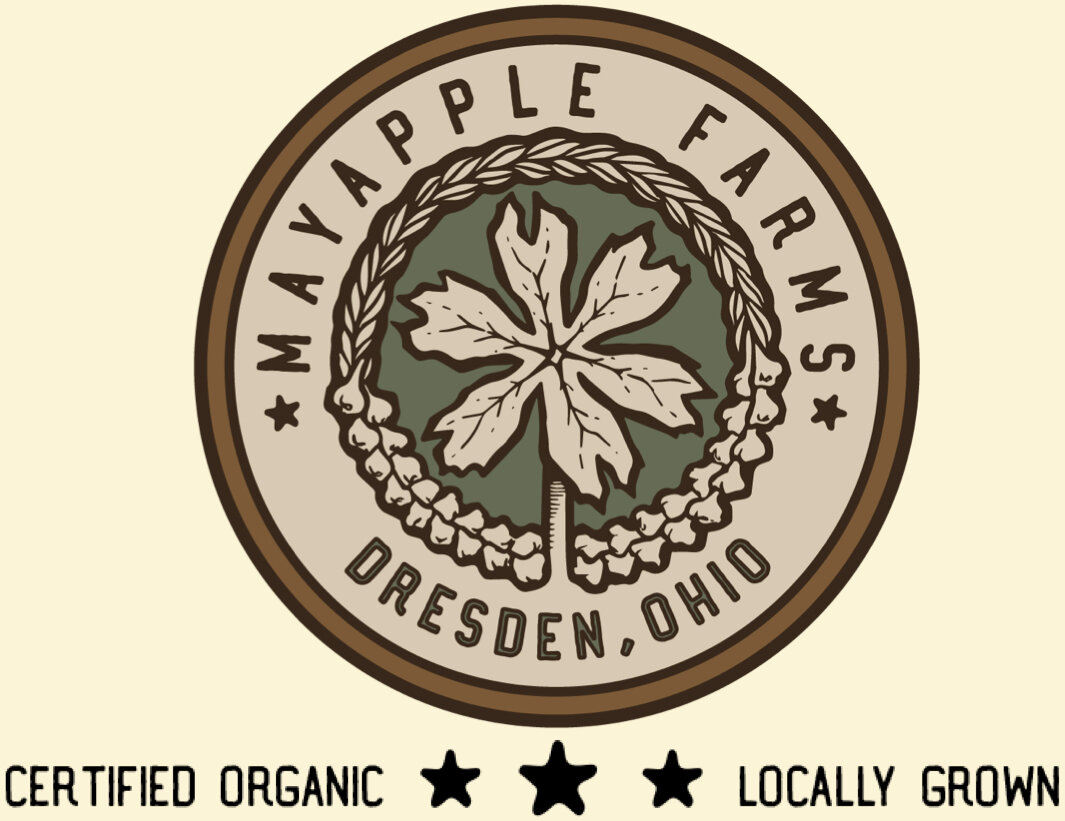


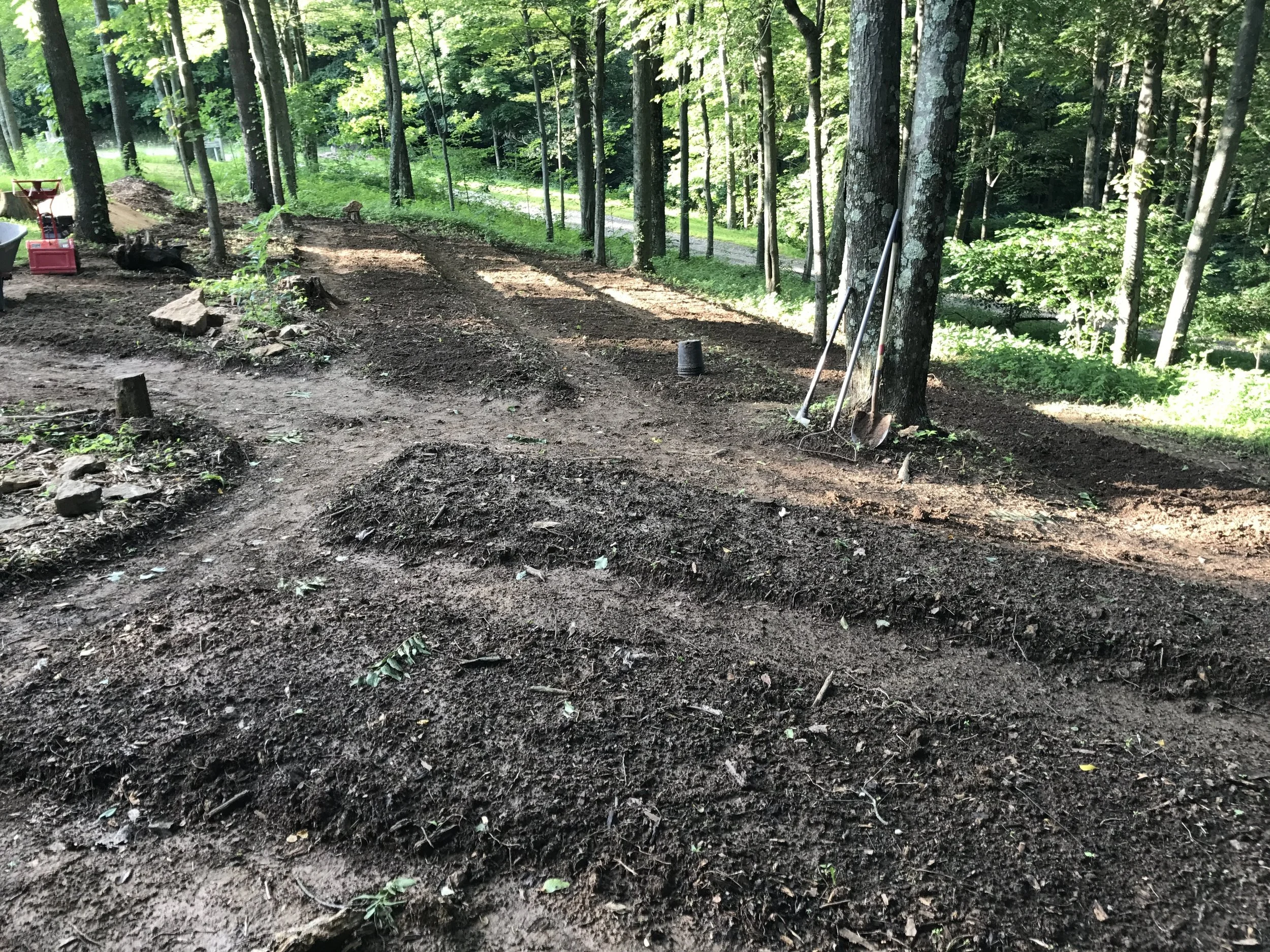

Winter is a pretty exciting time around our farm, believe it or not. We’ve been busy planning all the details of the coming season, picking out seeds (my personal favorite), and updating stuff like our logo and website.